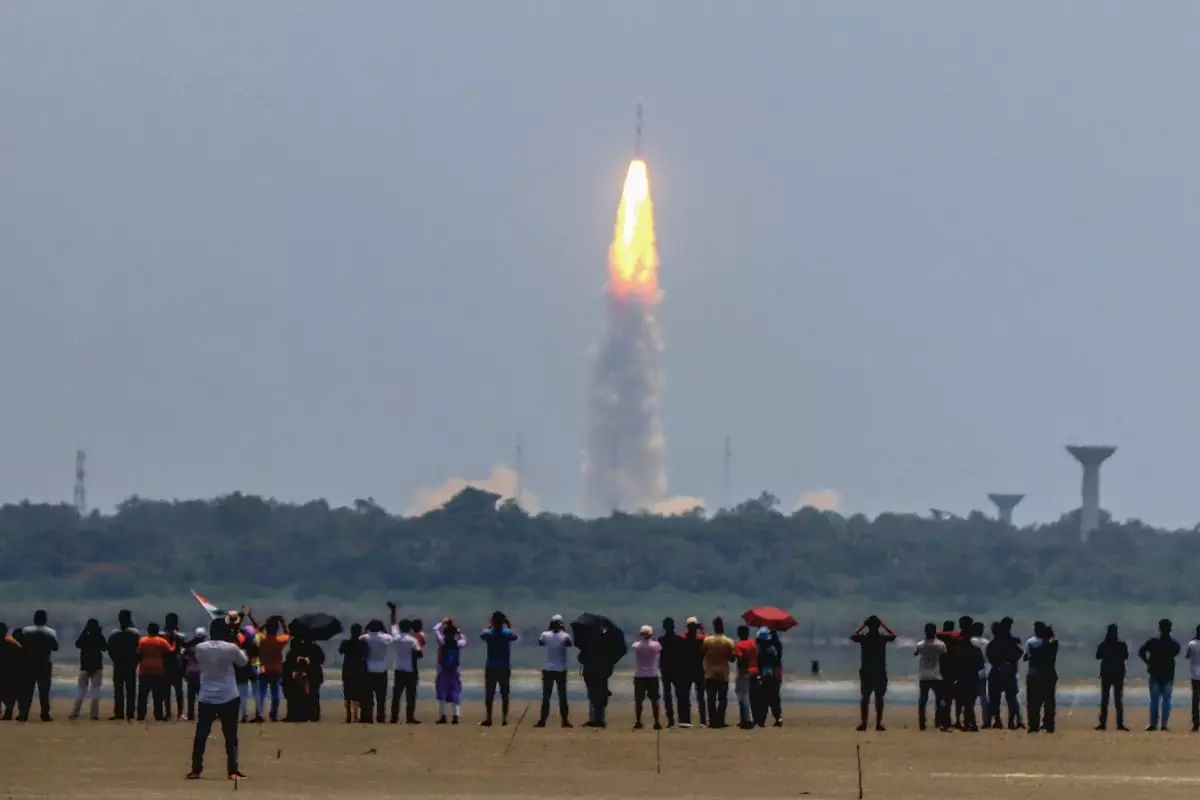India’s space agency, the Indian Space Research Organisation (ISRO), has marked a significant achievement with the successful completion of its inaugural solar mission, Aditya-L1. This ambitious mission, launched on September 2nd last year, reached its destination at Lagrange Point 1 within the anticipated four-month timeframe. Prime Minister Narendra Modi expressed his pride in this accomplishment, praising the relentless dedication of the country’s scientists.
Aditya-L1 is set to conduct a comprehensive study of the Sun, with a specific focus on the solar corona and its influence on space weather. The spacecraft, positioned approximately 1.5 million kilometers (930,000 miles) away from Earth, will perform remote sensing and in-situ observations for an estimated five years. Equipped with seven payloads, Aditya-L1 aims to deepen our understanding of the Sun, which plays a crucial role in controlling space weather.
One of the primary motivations behind this mission is to gain insights into the effects of solar radiation on the growing number of satellites in Earth’s orbit. With the rapid development of technology, including ventures like Elon Musk’s Starlink communications network, it is crucial to understand and mitigate the challenges posed by the Sun’s activity. By studying and analyzing solar radiation, Aditya-L1 will contribute essential knowledge to ensure the smooth functioning of various satellite-based systems and applications.
Aditya-L1’s position at Lagrange Point 1 offers multiple advantages for the mission. This point benefits from gravitational forces that allow objects to remain relatively stationary, resulting in reduced fuel consumption for the spacecraft. Additionally, this location acts as an early warning system, providing approximately one hour of advance notice for upcoming solar storms. By stationing a spacecraft at Lagrange Point 1, India’s space agency can better anticipate and prepare for potential disruptions caused by solar activities.
The successful completion of Aditya-L1 adds to India’s growing reputation as a major player in the field of space exploration. This achievement follows ISRO’s recent milestone of becoming the first country to land on the Moon’s south pole with the Chandrayaan-3 mission, surpassing Russia’s attempts. India’s space missions are driven by the country’s determination to expand scientific knowledge and technological capabilities, establishing itself as a prominent force in the global space community.
Aditya-L1 is only one among the many projects ISRO has planned for the future. Following this solar mission, ISRO has set its sights on two groundbreaking projects. The first is India’s first human space mission, which will propel the nation into a select group of countries capable of sending astronauts into space. The second project is the joint collaboration between NASA and ISRO called NISAR, a low-Earth orbit observatory system. NISAR will provide valuable data for monitoring and understanding changes in various natural phenomena.
With the successful completion of Aditya-L1, India continues to demonstrate its commitment to advancing scientific knowledge and technological capabilities. Collaborations with international space agencies, such as NASA, further enhance India’s position as a global leader in space exploration. As India embarks on these ambitious endeavors, the nation’s scientists and researchers will undoubtedly continue to push boundaries, paving the way for new discoveries and advancements in our understanding of the universe.

Leave a Reply